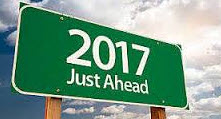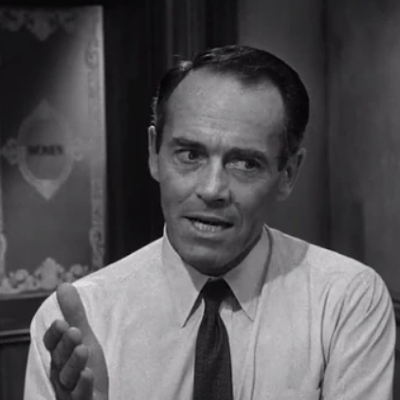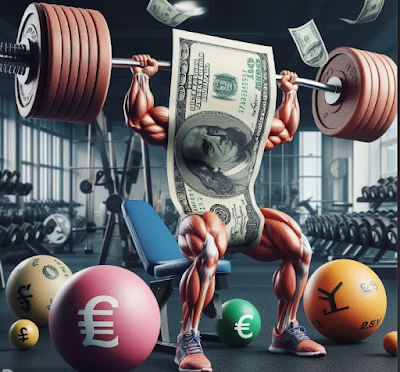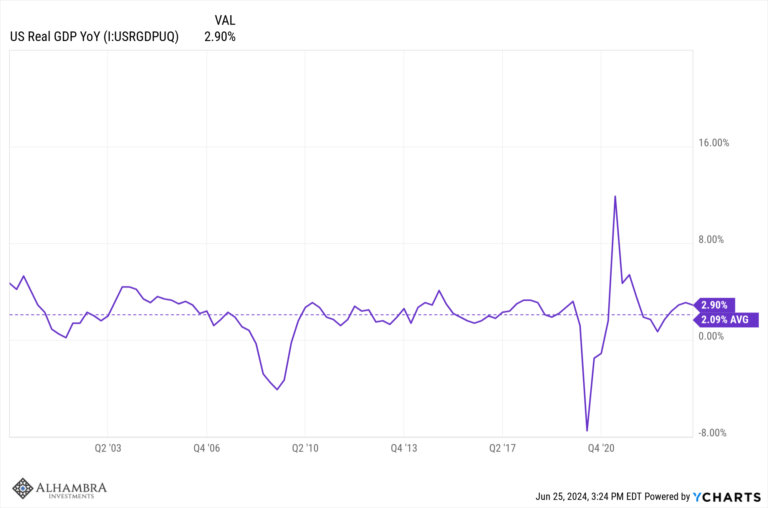Over 2016, I circled the earth to gain insight and share my thoughts on this path from financial crisis to central bank market manipulation to geo-political fall out, while researching my new book, Artisans of Money. (I’m pressing to hand in my manuscript by February 28th – the book should emerge in the Fall.)
I traveled through countries Mexico, Brazil, China, Japan, England and Germany, nations epitomizing various elements of the artisanal money effect. I spoke with farmers, teachers and truck-drivers as well as politicians, private and central bankers. I explored that chasm between news and reality to investigate the ways in which elite power endlessly permeates the existence of regular people.
In last year’s roadmap, I wrote we were in a “transitional phase of geo-political-monetary power struggles, capital flow decisions, and fundamental economic choices. This remains a period of artisanal (central bank fabricated) money, high volatility, low growth, excessive wealth inequality, extreme speculation, and policies that preserve the appearance of big bank liquidity and concentration at the expense of long-term stability.”
That happened. Going forward, as always, there’s endless amount of information to process. The state of economies, citizens and governments remains more precarious than ever. Major areas on the upcoming docket include – central bank desperation, corporate defaults and related job losses, economic impact of political isolationism, conservatism and deregulation, South America’s woes, Europe’s EU voter rejections, and the ongoing power shift from the West to the East.
For now, I’d like to share with you some specific items – which are by no means exhaustive, that I’ll be analyzing in 2017.
1) Watching the Artisans of Money (Central Banks)
On December 16th, 2015, after equivocating for seven years, the Fed raised rates by 25 basis points. To hedge itself against its own decision, the Fed claimed that despite this move (that the financial press considered indicative of an actual policy shift) its “stance of monetary policy remains accommodative after this increase.” Sure enough, the Dow opened January, 2016 with a 10% drop. The US stock market exuded its worst 10-day start to a year since 1897. Other global markets fared worse.
Four hikes were initially predicted for 2016. We got just one. Another 25 basis points followed – nearly to the day, on December 14, 2016. The Fed has now forecast another three hikes, for 2017. If you do the math, consider the reasons behind the Fed’s wishy-washy language, and ignore economic rhetoric, that translates to one hike this year.
Last year, I noted that the Fed’s December 2015 rate move was “tepid, and it’s possible the Fed moves rates up another 25 or 50 basis points over 2016, but less likely more than that.” This happened. Given the tempestuous state of the world and over-optimism surrounding Trump’s ability or desire to follow through on certain campaign vows, I see no reason for a different rate pattern in 2017.
2) Volatility for Stock Markets
Following a volatile start to 2016, markets rebounded. Not because fundamental economic conditions of the world’s major countries improved instantly or geo-political tension declined. But as other major central banks took over the cheap money mantle.
The cavalry appeared. The Bank of Japan hit negative rate territory in January, 2016. The European Central Bank adopted negative rates in March, 2016. As a result of these major central banks equalizing the cost of global money back to zero, the stock market bubble marched on. And if that wasn’t enough to show that liquidity and crisis concerns still exist, both central banks introduced additional manifestations of quantitative easing during the year with the ECB extension in time and BOJ extension up their yield curve.
In November, Donald Trump’s victory further elevated stock markets, especially sectors most likely to be deregulated by the incoming billionaire club administration, like banks.
Yet, the idea that any President can control the economy with a tweet and a set of disparaging or aggrandizing comments is foolish. Once the hype of a reality TV show president subsides into prevailing political and economic uncertainty, stock and bond markets will end the year crumbling in the dust of broken promises.
3) Rising Corporate Defaults and Oil Prices
Extending a disturbing trend, the number of large global corporations that defaulted in 2016 outpaced those in 2015 by 40 percent. The figure for 2016 hit 150, making 2016 the worst year for corporate defaults since the financial crisis.
If Trump wants to make America great again, he should start by examining the leverage in corporate America, where 2/3s of global corporate defaults occurred. Of those, 50 out of 63 globally, were in the oil and gas sector. (Emerging markets accounted for 28 defaults and Europe for 12). S&P expects the default rate to rise in 2017. And if Trump’s nominee for Secretary of State, Rex Tillerson, has anything to do with it, oil prices won’t move up much for 2017. This will mean more defaults in that sector. Based on his recent statements, his policies are cushioned in the ideology of pumping more oil, not less.
4) Turmoil in South America
Last year, given how scandal-plagued Brazil was, I thought no matter what happened regarding now-former Dilma Rousseff’s government, its markets would slip along with its economy. Yet, against all logic, interim President Michel Temer, even more plagued by scandal than his ejected predecessor, got a Hail Mary from the international investor community. Much of that had to do with Wall Street’s old friend Henrique Mereilles nabbing the minister of finance spot (having run Brazil’s Central Bank under President Luiz Inácio Lula da Silva (a.k.a. “Lula”) from 2003 to 2010.)
I also said that Argentina wouldn’t be having a “walk in the park.” The new centrist government removed currency capital controls in order to attract foreign money, which had the side effect of crushing the Argentinean peso. Unemployment and general angst increased. A group of protestors recently stoned the car of President Macri amidst growing resentment of his austerity measures.
Venezuela, a nation dependent on oil for 96% of its exports has erupted into total chaos. As perhaps the desperation move “currency controls” or restrictions were introduced in early December President Maduro announced plans to withdraw the 100 bolivar note which makes up 77 percent of all currency in circulation and closed the borders to stop people holding Venezuelan currency outside of the country. That caused mass panic and Depression like bank lines, looting and violence. The government chose to keep the 100-note in circulation until January 20. That’s a temporary measure. So is a large year-end bond issue from the government forced on the state banks. Things will get uglier. Restricting currency circulation is a harbinger of the war on cash everywhere. Contagion in South America is more likely to be acute this year.
5) First Half: Rising Dollar/ Sideways Gold, Second Half: Reverse and Cash
Last year, I said that despite other countries (and the IMF) seeking to battle the almighty Greenback, global malaise would “keep the dollar higher than it deserves to be.”
Then, I expected gold “to rise during the summer as a safe haven choice” which it did and to “end the year lower in US dollar terms” which it also did. This year, it’s likely that the dollar will remain strong in the beginning given the recent Fed hike, expectations of more, and initial enthusiasm for Trump’s promises. This will keep a lid on gold.
Yet once it becomes clear that US economic conditions remain lackluster and inequality rampant, the dollar will weaken and gold will appreciate. In the backdrop, though the US remains the world’s biggest gold holder, nations like China, India and Russia will continue to stockpile gold in a bid to diversify against the dollar.
In addition to watching the yellow metal, as I’ve urged over the past few years, routinely extracting cash from bank accounts remains a smart defensive play for 2017. People have asked me where to keep it. The answers depend on individual financial situations, but paying down debt, buying necessary hard assets and staying liquid with the rest in physical reach (there’s a reason for the term, keeping it ‘under the mattress’ is practical.
6) Power Shift from West to East through China and Japan
As it has done since cheap money became US economic and financial policy in the wake of the financial crisis, China continues to forge a US-independent path. It did so through inclusion of the Renminbi in the IMF’s SDR basket in October 2016. It also established a stronger relationship and side agreements with Russia, the BRICS community and increasingly with Europe and the United Kingdom post the Brexit vote. That was no accident, but part of a strategy to be distanced from the risk the US and its central and private banking system poses. The New Development Bank (formerly referred to as the BRICS bank) headquartered in Shanghai, China, offers alternatives to old institutions like the IMF, and allows for a rise of eastern and emerging nations to succeed in a collective format.
The trajectory of this power shift from the US dollar and US policies will escalate. If Trump and his team go the isolationist, or bilateral trade agreement routes, it will only push China to increases its economic, military and diplomatic presence globally. While Trump (and the outgoing Obama administration) accuse China of currency devaluation, the People’s Bank of China (PBOC) has actually been selling US treasuries to bolster its currency – hit by capital outflows, not manipulation. China sold $22 billion of US treasuries in July. Its US government debt holdings are at their lowest level in more than three years, and these sales, especially in the face of Trump’s scorn, will continue.
These accusations and geo-bullying will also push former adversaries, China and Japan closer together. The two nations are already negotiating some historic agreements. We could be approaching a new era in which Sino-Japanese relations allow for diplomatic normalization and more economic partnerships, which would be mutually beneficial.
Over 2016, Japan entered greater cooperation with India and Russia. The agreements it arranged will bolster Japan’s potential for 2017. The Yen should appreciate as a result. Even in the case of further economic turmoil in the US and around the world, the Yen will benefit, as it did during the financial crisis, from being a safe haven currency.
7) More Anti-EU sentiment and economic hardship in Europe
In 2015, Mario Draghi, European Central Bank (ECB) head decided to extend Euro-QE into March 2017. At the start of last year, I said that, “The euro will continue to drop in value against the dollar” and “negative interest rates will prevail.” That happened. And despite no evidence of any economic benefit (and purely to help ailing banks) Draghi extended Euro-QE to December 2017, with a promise to do more if necessary.
Meanwhile, mega banks in Europe continue to buckle, economies continue to stagger and the uprising of populations increasingly apprehensive of the entire EU apparatus will be felt in votes this year. Already, much of Eastern Europe (with notable exceptions of Austria and Romania) has elected anti-EU politicians. With major elections approaching – in the Netherlands in March, France in May and Germany likely in October, the only way for the sitting elite to retain power is to make the markets seem frothy. That means more QE manifestations from Draghi, a weaker euro, more bubbles in major European stock markets and greater presence from conservative, protectionist politicians.
In Europe, weaker countries are struggling more than ever. In Greece, more than one out of every three people now lives in poverty and 25% of Greeks are unemployed and receive no benefits. Even stronger countries like Norway and Switzerland will be at economic risk as they begin to negotiate trade agreements with the central EU.
8) Upside for Russia
Any way you look at it, Russia will be a key economic beneficiary for 2017. The ruble appreciated about 21% vs. the dollar in 2016, outperforming all other emerging market currencies for the year. This trend will continue. Russia’s MICEX stock market index rallied 24% for 2016. Russian bonds will maintain that path amid high interest rates (around 10%) and a positive geo-political outlook relative to the US.
Russia will enjoy warmer relationships with the US under the Trump administration and find and ally in Rex Tillerson as Secretary of State. It has strategically engaged in trade agreements with China to diversity against US ones. Simultaneously it has furthered relations with many Eastern European countries that have been disillusioned with the EU. As more pro-Russia officials are being voted into power, the positive impact on Russia’s economy will carry on.
These alignments could provide Russia more impetus militarily. Having stepped in to assuage the situation in Syria while the US remained relatively silent, it can also capitalize on its Middle East relationships. Russia supplies nearly one-third of the EU’s natural gas, but energy but, it has also begun clean energy initiatives through the BRICS development bank and other platforms, a strategic diversification. That’s why the ruble will outperform the euro and the pound sterling.
9) Angst in the United Kingdom
Before being picked as Trump’s Commerce Secretary, billionaire, Wilbur Ross called Brexit a “God-given opportunity” for UK rivals. As commerce secretary, he can act upon that characterization – through negotiations of new US-UK trade agreements that favor the US. That would increase UK reliance on more optimal EU negotiations, by no means a given. The UK can also hope that China and the BRICS will offer better opportunities, which increases the West to East power shift.
The sterling fell 14% in 2016, due to Brexit and anxiety over what form it will eventually take. Despite a year-end dead-cat bounce, uncertainty can only mount once negotiations truly begin. As the Financial Times noted, the number of times the words “uncertain” and “uncertainty” appeared in the Bank of England’s Monetary Policy Committee meeting minutes in 2016 rose 78 per cent vs. 2015. That doesn’t bode well for the sterling. But in the event of a Bank of England rate cut (to compensate for the Fed hike), there would be another temporary boost to the UK stock and bond market.
10) The Trump Effect Will Accentuate Unrest
Trump is assembling the richest cabinet in the world to conduct the business of the United States, from a political position. The problem with that is several fold.
First, there is a woeful lack of public office experience amongst his administration. His supporters may think that means the Washington swamp has been drained to make room for less bureaucratic decisions. But, the swamp has only been clogged. Instead of political elite, it continues business elite, equally ill-suited to put the needs of the everyday American before the needs of their private colleagues and portfolios.
Second, running the US is not like running a business. Other countries are free to do their business apart from the US. If Trump’s doctrine slaps tariffs on imports for instance, it burdens US companies that would need to pay more for required products or materials, putting a strain on the US economy. Playing hard ball with other nations spurs them to engage more closely with each other. That would make the dollar less attractive. This will likely happen during the second half of the year, once it becomes clear the Fed isn’t on a rate hike rampage and Trump isn’t as adept at the economy as he is prevalent on Twitter.
Third, an overly aggressive Trump administration, combined with its ample conflicts of interest could render Trump’s and his cohorts’ businesses the target of more terrorism, and could unleash more violence and chaos globally.
Fourth, his doctrine is deregulatory, particularly for the banking sector. Consider that the biggest US banks remain bigger than before the financial crisis. Deregulating them by striking elements of the already tepid Dodd-Frank Act could fall hard on everyone.
When the system crashes, it doesn’t care about Republican or Democrat politics. The last time deregulation and protectionist businessmen filled the US presidential cabinet was in the 1920s. That led to the Crash of 1929 and Great Depression.
Today, the only thing keeping a lid on financial calamity is epic amounts of artisanal money. Deregulating an inherently corrupt and coddled banking industry, already floating on said capital assistance, would inevitably cause another crisis during Trump’s first term.
Full story here Are you the author? Previous post See more for Next postTags: Bank of England,Bank of Japan,Bond,Brazil,BRICs,Business,central banks,China,default,Donald Trump,Dow 30,Eastern Europe,Economic bubbles,economy,Euro,European central bank,European Union,Eurozone,Federal Reserve,Financial crisis of 2007–2008,France,Germany,Great Depression,Greece,India,International Monetary Fund,Japan,Mario Draghi,Mexico,Middle East,Monetary Policy,Natural Gas,Netherlands,newslettersent,Norway,Obama Administration,Quantitative Easing,Reality,renminbi,Stock market crashes,Switzerland,Trump Administration,Twitter,Unemployment,United Kingdom,US Federal Reserve,US government,Volatility,Yen,Yield Curve









 As tumultuous as last year was from a global political perspective on the back of a rocky start market-wise, 2017 will be much more so. The central bank subsidization of the financial system (especially in the US and Europe) that began with the Fed invoking zero interest rate policy in 2008, gave way to international distrust of the enabling status quo that unfolded in different ways across the planet. My prognosis is for more destabilization, financially and politically. In other words, the world’s a mess.
As tumultuous as last year was from a global political perspective on the back of a rocky start market-wise, 2017 will be much more so. The central bank subsidization of the financial system (especially in the US and Europe) that began with the Fed invoking zero interest rate policy in 2008, gave way to international distrust of the enabling status quo that unfolded in different ways across the planet. My prognosis is for more destabilization, financially and politically. In other words, the world’s a mess.




























